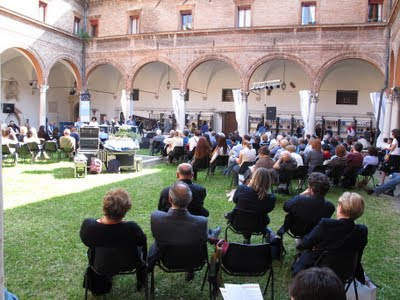by Ruth Ellen Gruber
The two-story home where the Warsaw Zoo’s director Jan Żabiński and his wife Antonina sheltered about 300 Jews and others from the Nazis during World War II is to become a small museum dedicated to the couple and their heroism.
According to
a report on Polish radio, the museum will be opened in the fall.
The Zabinskis were recognized by Yad Vashem as Righteous Among Nations in 1965.
Zabinski was allowed to enter the Warsaw Ghetto as a municipal official. There he connected with people he knew and, according to testimony on the Yad Vashem web site, helped get Jews "over to Aryan side, provided them with indispensable personal documents, looked for accommodations, and when necessary hid them at his villa or on the zoo’s grounds.”
With the Zabinskis' help, many Jews found temporary shelter in the zoo’s abandoned animal cells, until, the web site puts it, "they were able to relocate to permanent places of refuge elsewhere." In addition, the couple, aided by their son, sheltered nearly a dozen Jews in their two-story private home on the zoo's grounds.
According to the Polish radio report, when Nazis officials visited, Antonina Zabinska would play a certain piece of music on the family piano to warn Jews in the house that they should hide.
The Yad Vashem web site describes Zabinski as an active member of the Polish underground Armia Krajowa (Home Army), who
participated in the Polish uprising in Warsaw of August and September 1944. Upon its suppression, he was taken as a prisoner to Germany. His wife continued his work, looking after the needs of some of the Jews left behind in the ruins of the city. Jan wrote in his own testimony explaining his motives: “I do not belong to any party, and no party program was my guide during the occupation... I am a Pole – a democrat. My deeds were and are a consequence of a certain psychological composition, a result of progressive-humanistic upbringing, which I received at home as well as in Kreczmar High School. Many times I wished to analyze the causes for dislike for Jews and I could not find any, besides artificially formed ones.”
The Zabinskis'
story was recounted in the 2007 book by Diane Ackerman,
"The Zookeeper's Wife."
Publishers Weekly wrote:
Using Antonina's diaries, other contemporary sources and her own research in Poland, Ackerman takes us into the Warsaw ghetto and the 1943 Jewish uprising and also describes the Poles' revolt against the Nazi occupiers in 1944. She introduces us to such varied figures as Lutz Heck, the duplicitous head of the Berlin zoo; Rabbi Kalonymus Kalman Shapira, spiritual head of the ghetto; and the leaders of Zegota, the Polish organization that rescued Jews. Ackerman reveals other rescuers, like Dr. Mada Walter, who helped many Jews pass, giving lessons on how to appear Aryan and not attract notice. Ackerman's writing is viscerally evocative, as in her description of the effects of the German bombing of the zoo area: ...the sky broke open and whistling fire hurtled down, cages exploded, moats rained upward, iron bars squealed as they wrenched apart.
































